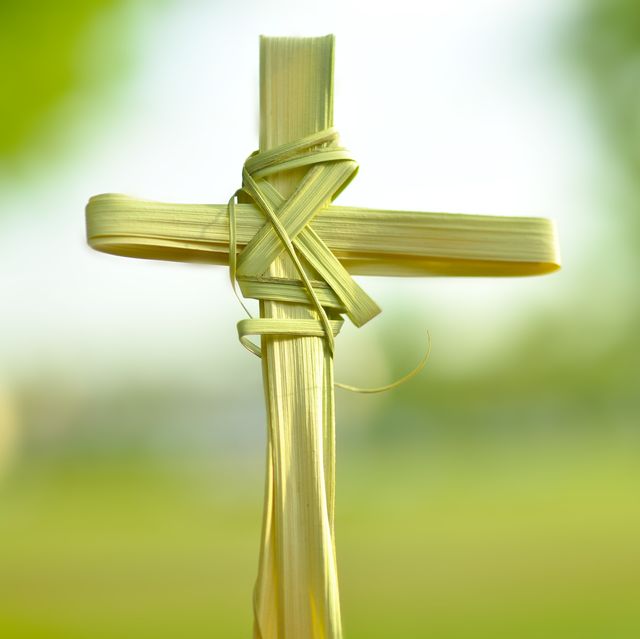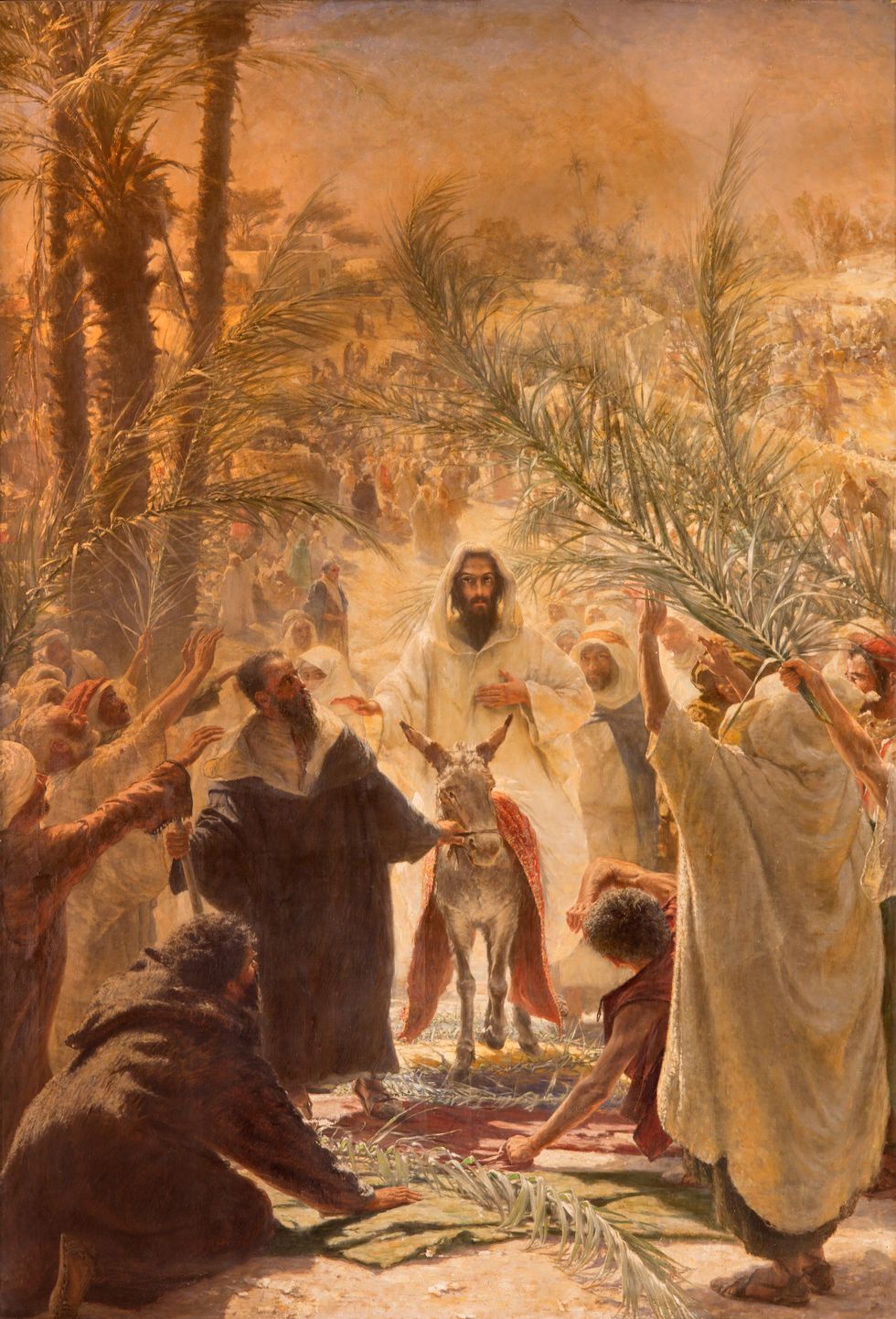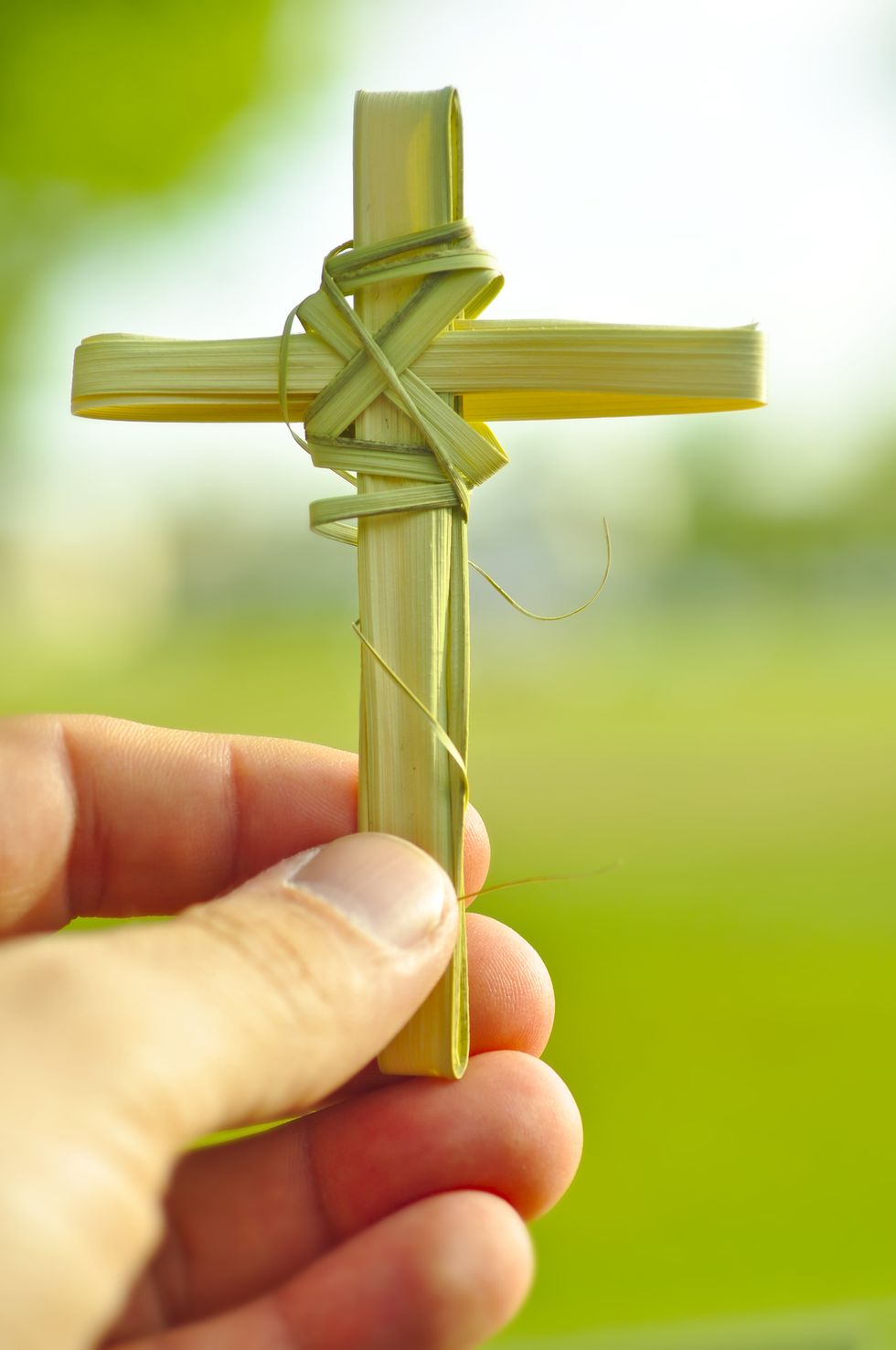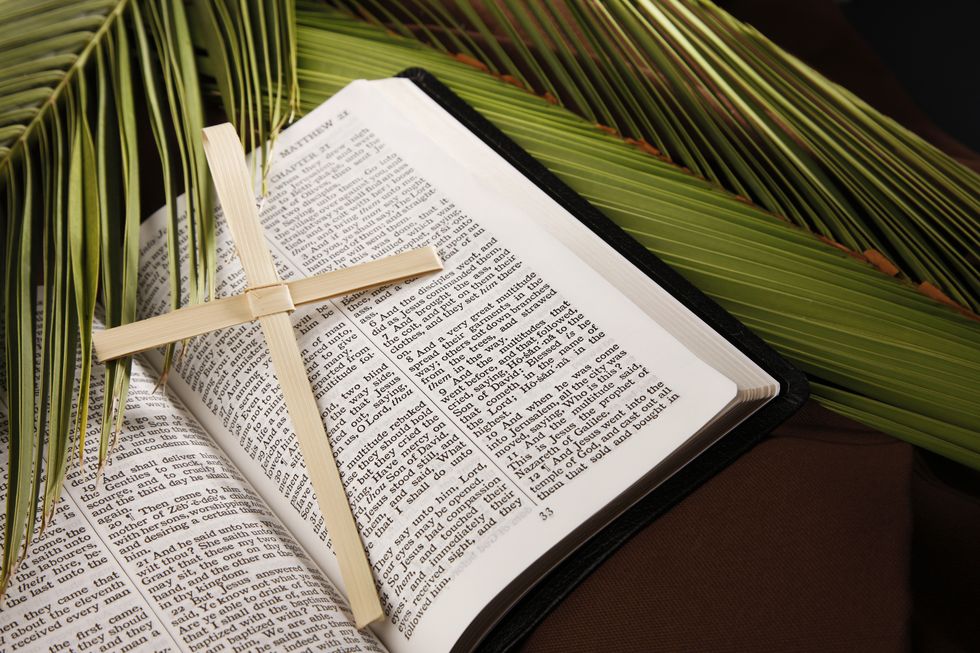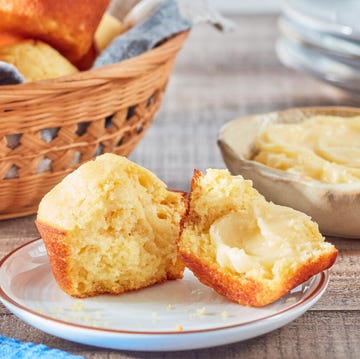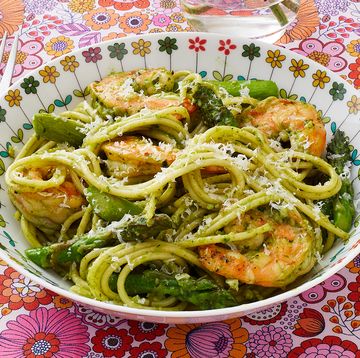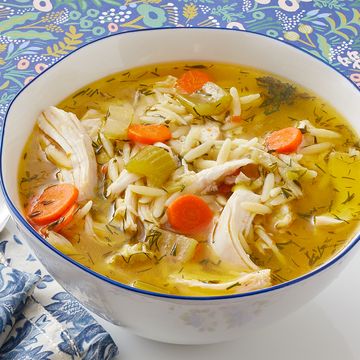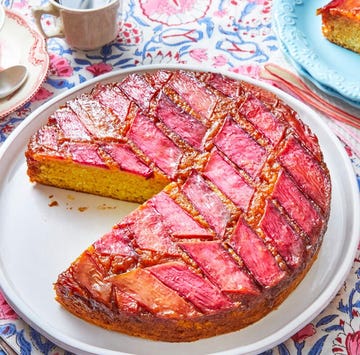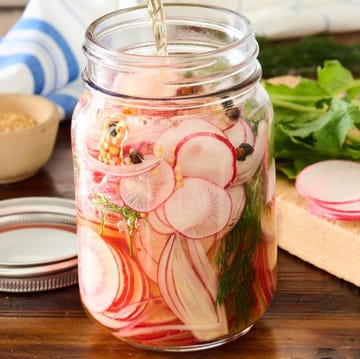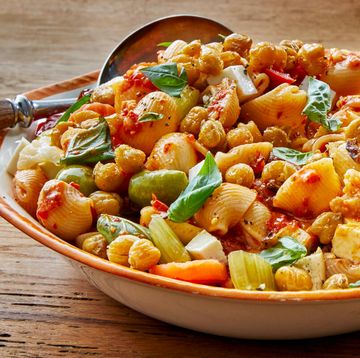There's just so much to love about spring: warmer weather, blooming flowers, and of course, all those special days that come with the season of rebirth and life—looking at you Easter! Thanks to delicious Easter brunch and fun Easter traditions like egg hunts and the Easter bunny, it's definitely a favorite. But there are so many other important days to celebrate, too. One of those being Palm Sunday!
Palm Sunday is the final Sunday of Lent season for Christians and signifies the first day of Holy Week—the days including Good Friday and Easter that are spent in remembrance of Jesus' time in Jerusalem before He was crucified, then resurrected. This year, Palm Sunday is on Sunday, April 13, 2025, but every year, it's celebrated for the same important reason: to commemorate Jesus' entrance into Jerusalem.
And although churches are always a powerful place to be, they become that much more special on Palm Sunday—especially when the chapels are decked out in beautiful palm branches and attendees honor Christ by crafting palm crosses out of those fronds. But have you ever wondered what do they mean and how are those symbolic crosses made? If you're curious, or just need to brush up on your religious history, you'll find those answers here. So, read on for everything you need to know about the palm cross—plus, how to make one!
What Is the Meaning of the Palm Cross?
Palm Sunday itself marks the day Jesus entered Jerusalem. He entered the city knowing He would be tried and crucified—yet welcomed this fate in order to rise from the grave and save His followers from sin. As He first rode into the city on a donkey, crowds gathered to welcome Him by scattering palm branches at His feet and waving the fronds as He passed. At the time, those branches were considered symbols of victory, triumph, and peace to the people of the Holy Land.
Today, the name Palm Sunday comes from those very palms which will be incorporated into Christian services around the world as they carry the meaning of The Savior's triumph over death to bring eternal life.
Are Palms in the Bible?
Yes, palms are mentioned multiple times throughout the Holy text, including in both the Old and New Testaments. They often represent victory, peace, and eternal life in the biblical context. A few notable references include John 12:13 and Matthew 21:8, when people lay palm branches before Jesus as He enters Jerusalem, signifying triumph and kingship. In 1 Kings 6:29, palms were carved into the walls of Solomon’s temple, symbolizing righteousness and victory.
Additionally, in Leviticus 23:40 palm branches are part of the Feast of Tabernacles, symbolizing joy and celebration before the Lord. These verses, along with many similar scriptures, highlight the significance of palms in various contexts, such as worship and righteousness.
How Do I Make a Palm Cross?
From decorating pews with fronds and handing them out for parishioners to hold during service to having a procession where the congregation places them before their priest, palm branches are used in many ways on Palm Sunday by different denominations of the Christian Church.
But a popular tradition amongst many worshipers is crafting a palm cross out of the branches that have been blessed and passed out—and though the beautiful crosses look extremely intricate, they're not too difficult to make. We've even included step-by-step instructions for you to follow. And if your cross ends up looking a little different from others you see, don't worry! It's uniquely you!
Step 1
If it hasn't already been done, you'll want to begin by splitting your palm frond in half. To do this, locate the center vein that separates the two halves of the leaf and gently pull them apart. Don't forget to remove any extra strings and use the side without the vein—this will make your weaving easier.
Step 2
Make your first fold by gently bending the palm in half. Take the thick end of the palm and loosely fold it over on itself—towards you. The back piece will be the length of your cross once it's finished.
Step 3
Take the front section and fold it to the right, making an angled crease where you want the crossbar to be. This will be the arm of your cross.
Step 4
Now that you've started the first arm, take that section pointing to the right and bend it back and around the other way to create the second arm. It should now point to the left.
Step 5
Take the section now pointing to the left and continue your circle around the vertical section of the frond by bending it around the front so that it now points to the right and lines up with or goes past your first arm.
Step 6
Start to secure the cross shape you just made by folding that extra length of palm up and to the right at a 45-degree angle. It should go right between the top of the vertical section and the first arm.
Step 7
Next, fold that angled section down and around the back.
Step 8
Now, fold that end up and slightly over so it’s parallel to the arms of the cross.
Step 9
Fold it across the back again at another 45-degree angle.
Step 10
Finish securing the cross by bringing that tail end of the palm down and threading it under the small piece in the back.
Step 11
Wind the tail around that same piece until there is not enough palm to wind any further. Your cross should be secure now.
Step 12
Now's the time to admire your work! Flip your woven cross around. You’ll see that you’ve made an “X” shape in the front to hold everything in place.
How Can I Incorporate Palm Crosses into My Worship?
Palm crosses can be incorporated into worship in various ways and work to enrich the experience as you connect with their history and meaning. Oftentimes, palm crosses are distributed to congregants on Palm Sunday as a symbol of Jesus' triumphant entry into Jerusalem. They can be used in processions or as part of the liturgy. It's also common to bless the crosses before worship begins.
Additionally, holding a palm cross during individual or group prayer can serve as a reminder of Christ’s journey. You can also incorporate them into a lesson or sermon to educate on their significance. Finally, use your palm cross as spiritual décor. Whether at home or at church, you can place your palm cross on altars, pews, or doors as a symbol of your faith.
What Should I Do with My Palm Cross?
Since palm fronds are blessed before they are distributed on Palm Sunday, they hold a Holy status. That means you can't simply throw your palm cross away when the service is over. Usually, they are gathered by the church where they will be burned to create ashes that will be used in the following year's Ash Wednesday observance. Another option is to bury the palm cross. This type of disposal still honors its sacred purpose as it's returned to the earth in a dignified way.
You could also hold on to the palm cross you make and use it again at your next Palm Sunday service. If you do this, remember to treat it as a sacramental object. You can do this by placing it at a prayer spot in your home or tucking it behind a religious picture or crucifix. This can serve as a constant reminder throughout the year of Christ's love and sacrifice.
Macie Reynolds is the assistant editor of E-Commerce and SEO for The Pioneer Woman.
